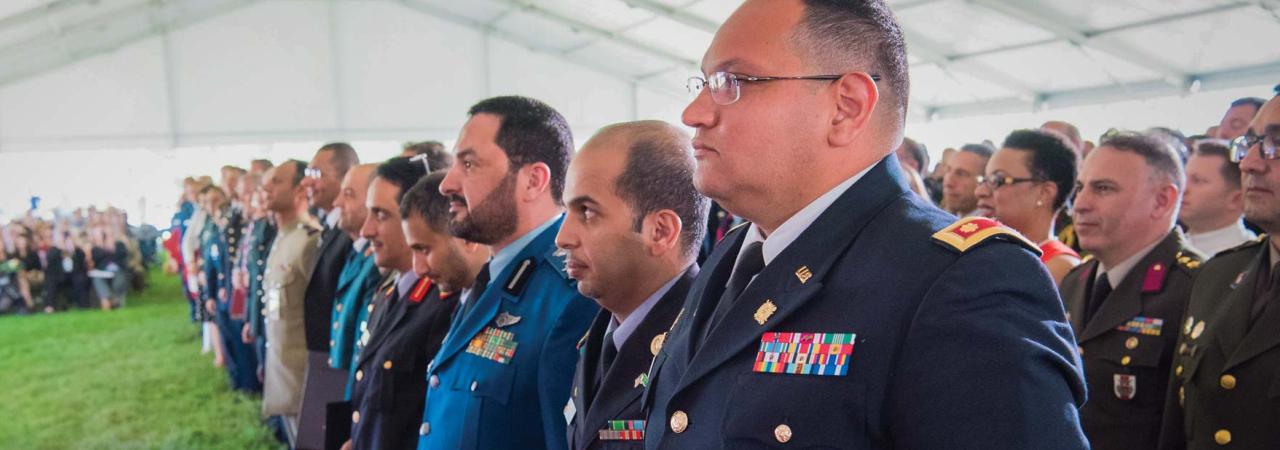
Graduation Day, National Defense University
As part of a series on military service academies, the American Battlefield Trust examines the military’s higher education system and the pursuit of graduate-level military instruction.
The military’s higher education system is built around the five federal service academies, but they are supplemented by 10 military graduate schools, of which the best known is the United States Army War College at Carlisle Barracks in Carlisle, Pennsylvania. The Carlisle Barracks dates back to 1757 and the French and Indian War and is the second-oldest active military base in the U.S.
The Army War College, founded in 1901, offers graduate-level classes to prepare hand-picked army colonels and lieutenant colonels and officers from other branches of service for senior leadership positions. The college has about 800 students and awards its graduates master’s degrees in strategic studies.
Its counterpart in the U.S. Navy is the Naval War College, established in 1884 at Newport, Rhode Island. More than 50,000 students have obtained degrees there since its first class of nine graduated in 1885. The college has about 600 graduate students working toward a master of arts degree in national security and strategic studies.
The navy also operates the long-established Naval Postgraduate School in Monterey, California. Founded in 1909, the school offers master’s and doctoral degrees in more than 70 fields of study and has about 2,200 students.
The primary graduate school of the U.S Air Force is the Air Force Institute of Technology at Wright-Patterson Air Force Base in Dayton, Ohio, which was established in 1919. It has more than 700 full-time graduate students, mostly air force officers, studying at four schools — the Graduate School of Engineering and Management, the School of Systems and Logistics, the Civil Engineer School and the School of Strategic Force Studies. The Institute also has seven research centers.
The Marine Corps University, founded in 1989 by Gen. Alfred M. Gray, Jr., is the newest of the major military postgraduate schools. Its campus is at Quantico, Virginia, on the Potomac River just south of Washington, D.C., and includes the nearby National Museum of the Marine Corps. The Marine War College, established in 1991, is the senior school within the university. Others include the School of Advanced Warfighting, the Command and Staff College and the Expeditionary Warfare School.
The National Defense University at Fort McNair in Washington, D.C., was established in 1976 to provide high-level education and professional development of national security leaders both inside and outside the military. It has about 4,000 students in five different colleges and schools: the National War College, the College of International Security Affairs, the Dwight D. Eisenhower School for National Security and Resource Strategy, the Joint Forces Staff College and the College of Information and Cyberspace.
The university says its mission is to educate military officers “and other national security leaders in critical thinking and the creative application of military power. . .under conditions of disruptive change, in order to prevail in war, peace, and competition.”
The other military graduate schools in the United States are the Air War College in Montgomery, Alabama, the United States Army Command and General Staff College at Fort Leavenworth, Kansas, and the United States Army Warrant Officer Career College at Fort Rucker, Alabama.


